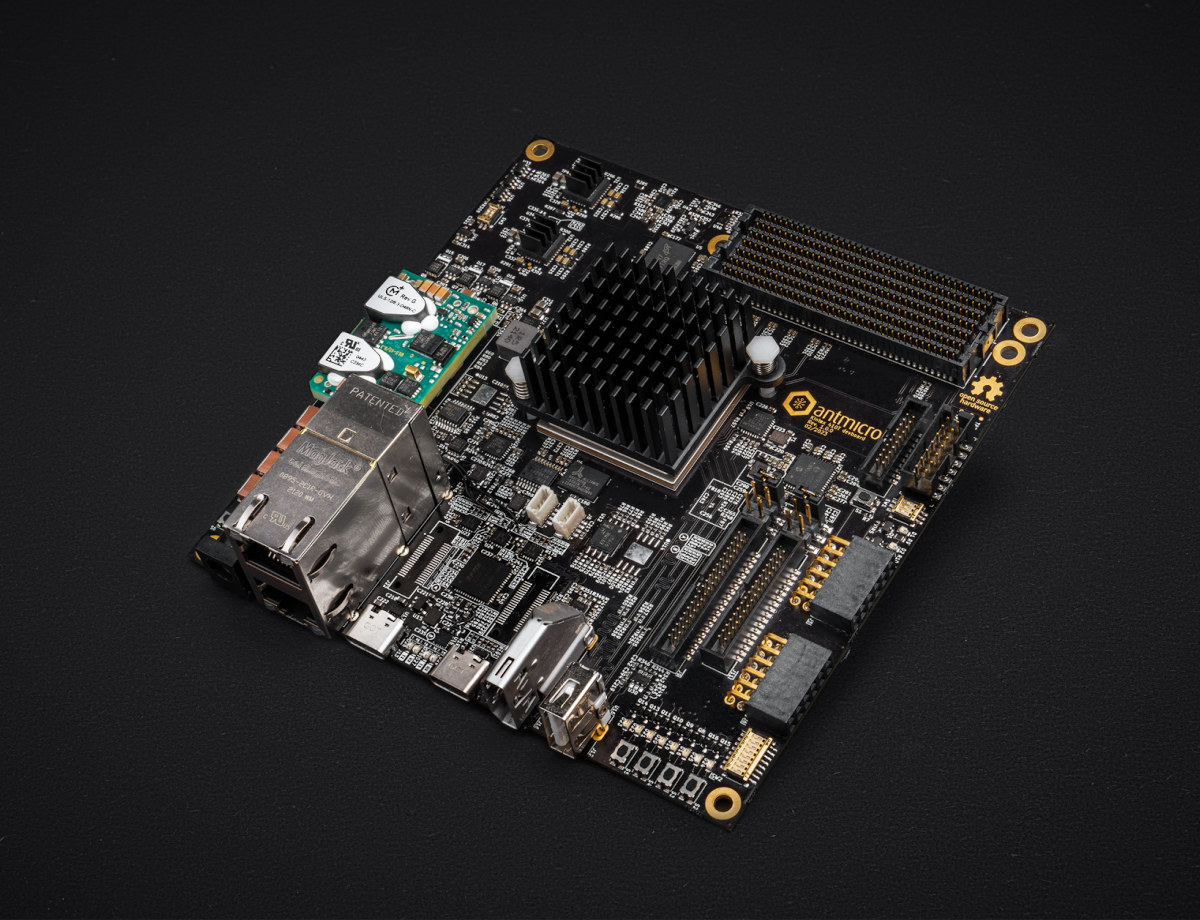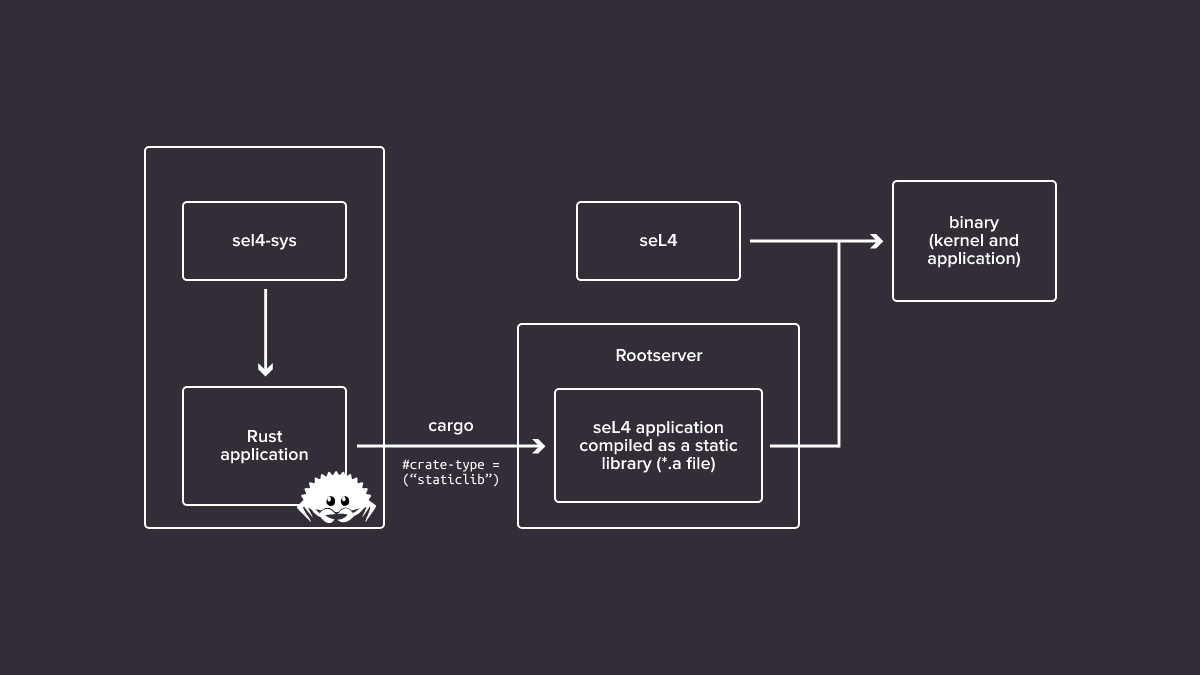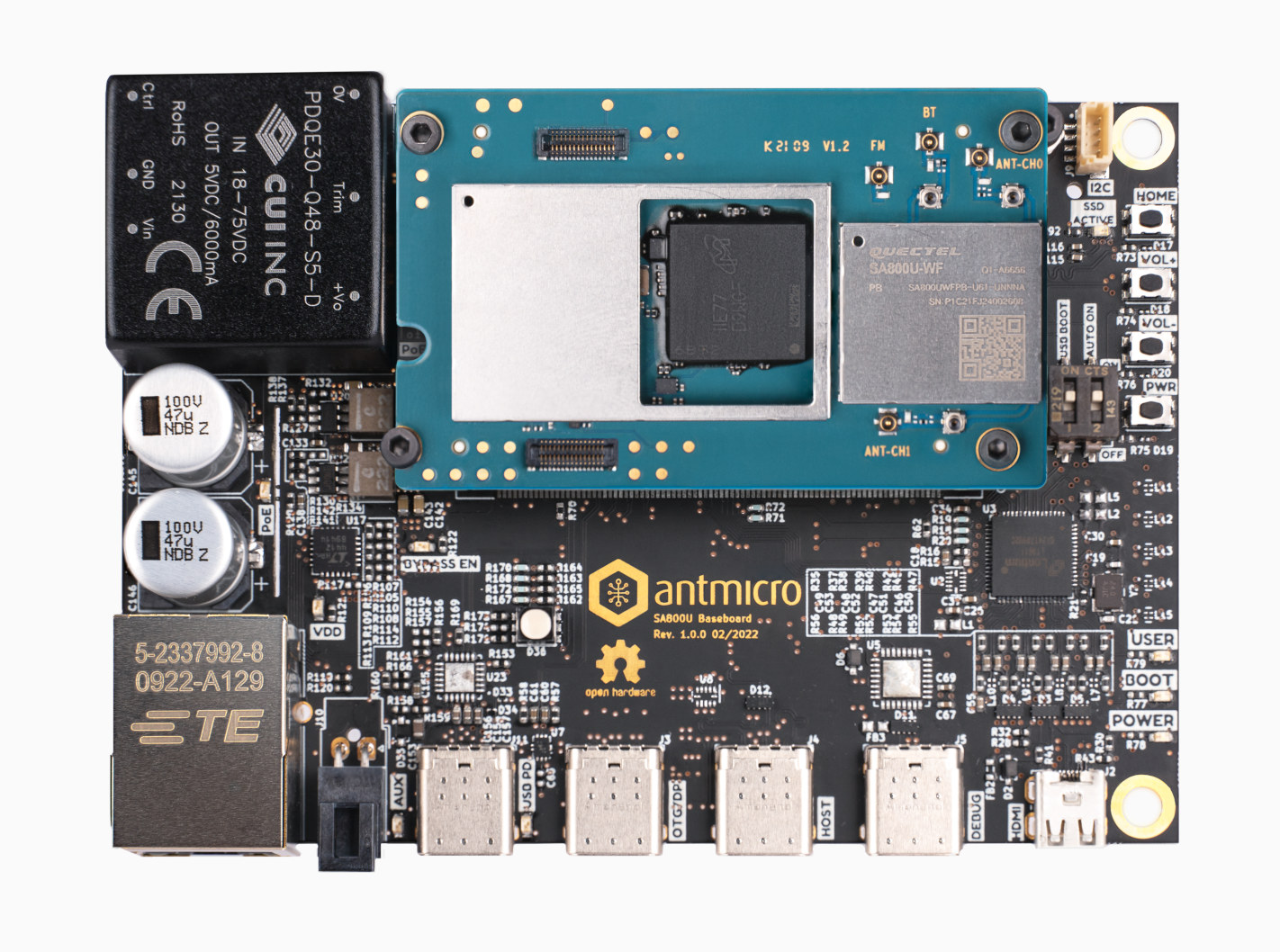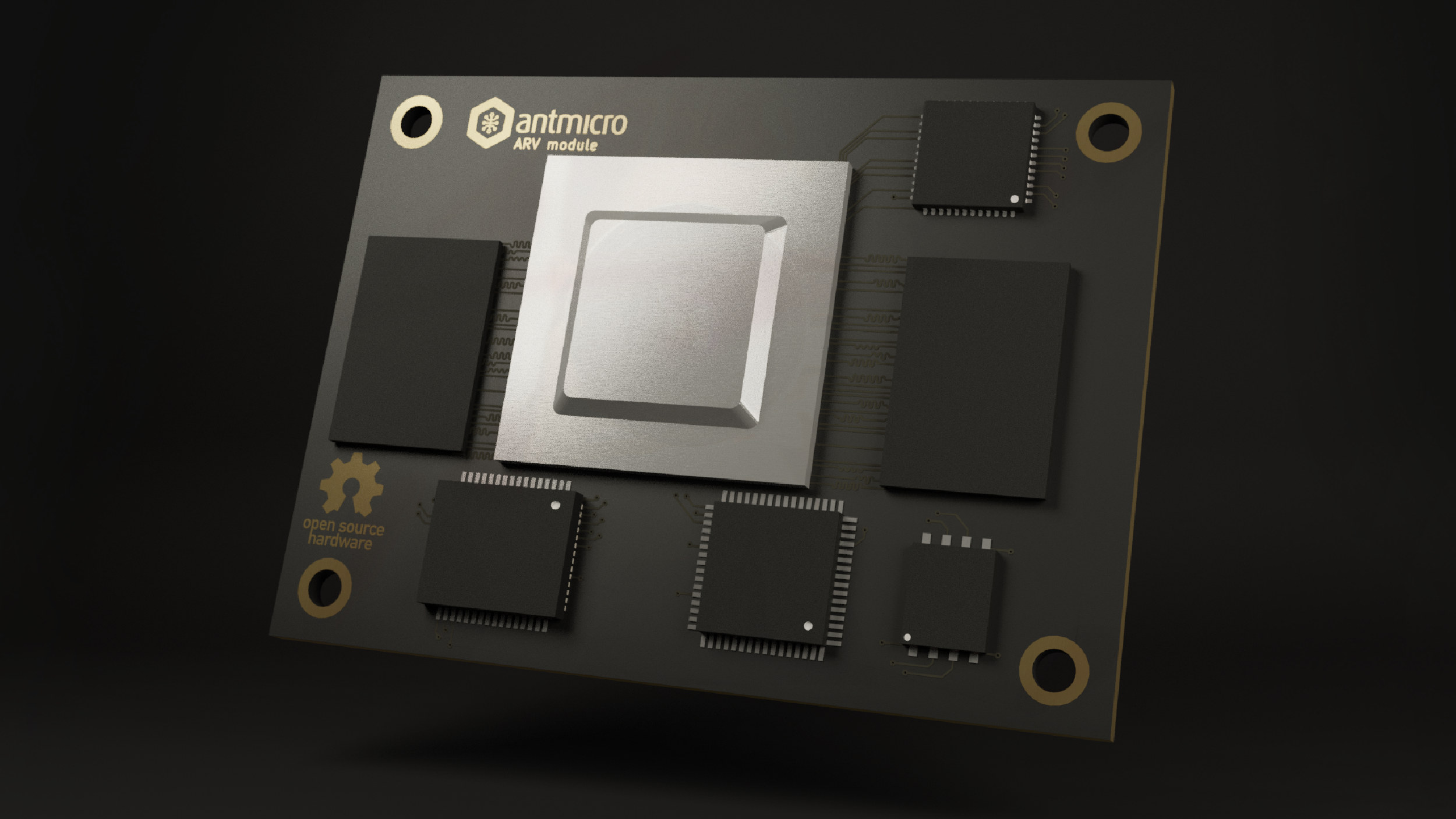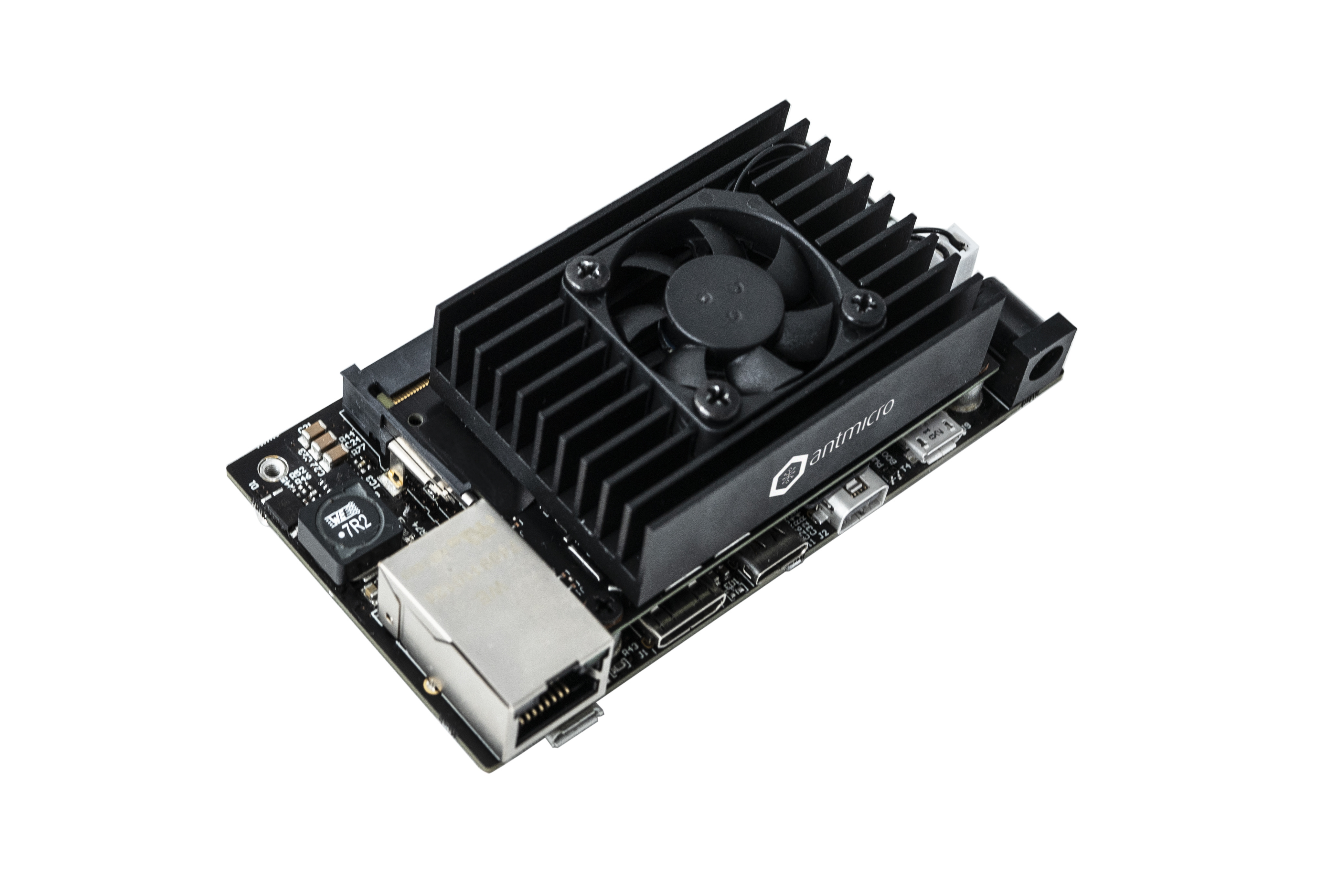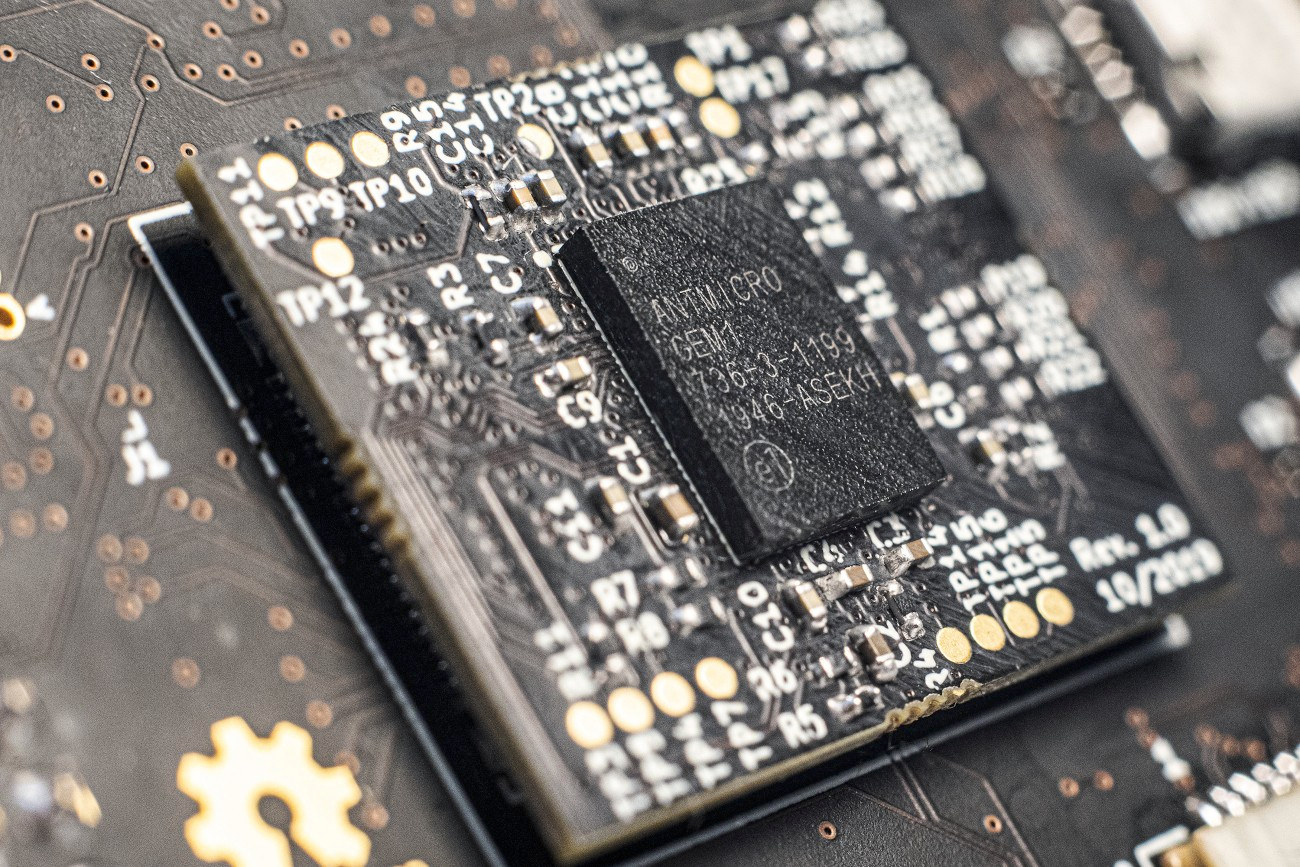Antmicro has designed an open hardware AMD Xilinx Kintex-7 K410T FPGA development board in KiCad 6 mostly to synthesize custom RISC-V-based processing platforms and work on the OpenTitan Root of Trust project. Separately, the company has also launched an open hardware portal sharing some of the KiCad and Blender designs they’ve worked on over the years. Open-source hardware AMD Xilinx Kintex-7 K410T development board Key features and specifications: FPGA – AMD-Xilinx Kintex-7 K410T FPGA with 400K logic cells, 16 Gigabit transceivers operating at 12.5Gb/s. System Memory – 512MB of DDR3L memory, 8MB of SRAM memory Storage – 32MB (256Mbit) of (Q)SPI NOR flash, assembly option for 2x QSPI flash, microSD card slot Video Output – HDMI port Networking – 1x Gigabit Ethernet RJ45 port, 1x 10/100M Ethernet port USB USB 2.0 Type-A host connector USB Type-C connector for FTDI JTAG and debug Expansions 2x PMOD connectors FMC+ connector with PCIe […]
Google KataOS – A secure OS for embedded systems written in Rust (mostly)
Google Research has been working on its own Rust-based operating system called KataOS and designed to secure embedded systems that run Machine Learning (ML) applications. There has been a lot of talk about the Rust programming language in recent times, since it offers about the same level of performance as C programming but helps programmers write more secure code with built-in prevention against buffer overflows for instance. It has gained a lot of traction over the years, and Linux 6.1 will be the first kernel release to include Rust code. Google Research noticed that system security is often treated as a feature that can be added to existing systems either by software or an extra security chip. But in a world, where more and more of our private data is exposed to the world through the Internet, it is not good enough, so the company developed KataOS open-source, secure operating […]
Antmicro releases open-source hardware Snapdragon 845 baseboard designed with KiCad
Antmicro team has released an open-source hardware baseboard for Quectel SA800U-WF System-on-Module powered by Qualcomm Snapdragon 845 octa-core processor, which they designed with KiCad open-source EDA tool. The baseboard supports NVMe storage and offers Micro HDMI and MIPI DSI video interfaces, Gigabit Ethernet with PoE support, USB 3.1 Type-C interfaces, and other I/Os, plus three separate power inputs. The company expects the design to serve as a starting point for building portable smart assistants, kiosks, VR/AR or smart screens, and more. Antmicro Snapdragon 845 baseboard specifications: Supported system-on-module – Quectel SA800U-WF with: SoC – Qualcomm Snapdragon 845 octa-core Kryo 385 processor (4x Cortex A75 cores + 4x Cortex-A55 cores), Adreno 630 GPU, Hexagon 685 DSP, 4K H.265/H.264 video decoding and encoding System Memory – 4 GB LPDDR4X Storage – 64 GB UFS storage 802.11b/g/n/ac Wi-Fi 5 2×2 MIMO and Bluetooth 5.0 module Board-to-board connector for connection to baseboard Dimensions – […]
Antmicro ARVSOM offers StarFive JH71x0 RISC-V processor, Raspberry Pi CM4 compatibility
The Linux capable BeagleV SBC, now called “BeagleV Starlight”, was announced last January with a StarFive JH7100/JH7110 64-bit RISC-V processor, and developers and beta users have just started to get their hand on the board in recent days. But there’s another StarFive JH71x0 hardware in the works with Antmicro ARVSOM. The system-in-module will feature the dual-core RISC-V processor, and be compatible with Raspberry Pi CM4, and by extension Antmicro’s Scalenode server-oriented baseboard. The company did not provide the complete specifications for the module, but based on public information available, Antmicro ARVSOM should feature the following: SoC – StarFive JH7100 Vision SoC: RISC-V U74 dual-core with 2MB L2 cache @ 1.5 GHz Vision DSP Tensilica-VP6 for computing vision NVDLA Engine 1 core (configuration 2048 MACs @ 800MHz – 3.5 TOPS) Neural Network Engine (1024MACs @ 500MHz – 1 TOPS) VPU – H.264/H.265 decoder up to 4Kp60, dual-stream decoding up to 2Kp30 […]
Compact Jetson Xavier NX/ Nano open hardware baseboard supports Android
When it comes to NVIDIA Jetson family of modules, we should understand that NVIDIA Jetson Nano is for makers and STEM education, while Xavier NX is more geared towards professional and commercial use. The compute module Xavier NX was announced before the development kit, which includes the module and reference carrier board and otherwise for NVIDIA Jetson Nano. There are some third-party carrier boards & edge computers available for Jetson Xavier NX and Jetson Nano, including DesignCore Carrier Board and Diamond FLOYD Carrier Board. Antmicro, a custom hardware, software, and AI engineering company, came up with a compact open hardware device: Jetson Nano/ Xavier NX baseboard. It supports both NVIDIA Jetson Nano SoM as well as the Xavier NX SoM. The board is designed to put NVIDIA’s versatile module at the heart of cutting-edge projects and drive innovation in areas such as AI/ML, drones, medical and industrial object recognition systems. […]
zGlue Launches the Open Chiplet Initiative in Collaboration with Google and Antmicro
We first covered zGlue’s ZiP (zGlue Integration Platform) in 2018 as the company introduced its multi-chip module similar to SiP (system-in-package) via a crowdfunding campaign. Just like SiP, the technology packages several components into a single package, but costs have been brought down to enable low-volume production of custom chips for a reasonable price. Since then the company announced new ZiP multi-chip modules such as nRF52832 based Omnichip and the FPGA, Arm or/and RISC-V based GEM ASIC by Antmicro. The company recently announced the Open Chiplet Initiative, a collection of open-source designs, tools and file formats, launched in collaboration with Google and Antmicro. There are four main types of tools within the Open Chiplet Initiative: Open Chiplet Interfaces – Currently only ZEF (zGlue Chiplet Info Exchange Format) is provided. It defined the part numbers, pins, and mechanical dimensions of various parts. The ZEF specification can be found on Github. Design […]
Antmicro GEM ASIC Leverages zGlue Technology to Quickly Bring Custom Arm/RISC-V SoC’s to Market
Introduced in 2018, ZiP (zGlue Integration Platform) chip-stacking technology aims to produce chips similar to Systems-in-Package (SiP) but at much lower costs and lead times. We first found it in a Bluetooth tracker featuring ZGLZ1BA custom chip manufactured with zGlue technology and integrating an Arm Cortex-M0 MCU, flash memory and sensors into a single package. But now the technology is back in the news with Antmicro announcing GEM chiplet-based ASIC last December. At the time of the announced the company’s GEM1 chip featured two Lattice iCE40 FPGAs with a MIPI CSI-2 switch, and they had started working on GEM2 chip combining a hard RISC-V processor and Lattice iCE40 FPGA. Those are so-called demonstrators chip as Antmicro customers will be able to easily and quickly design their own 6×9 mm chip(s) with RISC-V and/or ARM CPUs, FPGAs, sensors, radios and other functional elements to meet the requirements of their specific applications. […]


